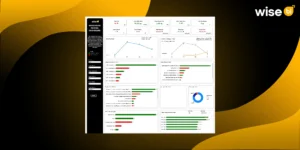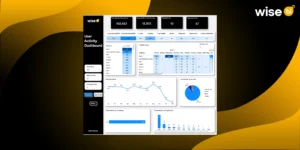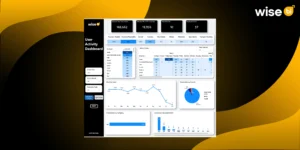Introduction
Shipping costs are another major aspect of the operational cost especially when businesses transport their products to consumers. These costs must be effectively controlled to minimize their influence on profitability and price competitiveness.
Shipment analysis is central to the effort of minimizing shipping costs by offering crucial information through the dashboard, which can be instrumental in enhancing the efficiency of the shipping processes, and at the same time decreasing costs.
In this blog, let us discuss why shipment analysis is important to track shipping costs and how organizations can utilize it to improve their supply chain operations.
Factors that Affect the Cost of Shipping
Package Weight and Dimensions
The weight and size of the package affect shipping charges drastically. Larger and less bulky shipments are also more expensive since they utilize more resources in packaging and delivery.
Shipping Distance
Distance is another important factor that determines the cost of shipping a package. It is often true that longer distances attract higher shipping fees because the carriers have to travel longer distances and possibly across different zones or regions.
Delivery Speed
Express or next-day delivery often attracts additional charges more than the standard delivery fees. Customers expect fast delivery of goods while not expecting the business to spend a lot of money in the process.
Additional Services
Some of the additional costs associated with the shipping of goods include insurance, tracking, and special handling services. These services are useful and safe but they have to be controlled so that they don’t become a source of overspending.
Recognizing how these and other factors influence shipping costs is the first stage toward finding areas where a shipment analysis dashboard can have an effect.
Benefits of Shipment Analysis
Through shipping data analysis, commercial organizations are made aware of their shipping processes. This visibility is very useful for finding waste, constraints, and opportunities for change.
Trend and Pattern Analysis
BI Dashboard for Shipment analysis helps to identify patterns and nuances in shipping data, including but not limited to the period with higher shipping frequency, popular shipping destinations, and frequent shipping problems. Understanding these trends helps businesses prepare for difficulties and make the best choices.
Routing and Scheduling of Shipments
Studying shipping routes and their frequency enables the best delivery path planning in terms of distance and time taken. This optimization results in cost reductions as well as enhanced overall delivery capabilities.
Reducing the Number of Shipping Errors and Delays
Thus, the analysis of shipment provides information about such shipping mistakes and possible delays, which can be corrected by companies. Minimizing mistakes and waiting time leads to improvement in customer satisfaction.
Improved Customer Satisfaction
Shipping operations ought to be efficient and reliable because they positively impact customer satisfaction. Punctuality and reliable tracking help gain the trust and patronage of the customers.
These advantages can go a long way in helping businesses cut their shipping expenses and improve the functionality of their supply chain.
How Shipment Analysis Can Be Used to Reduce Shipping Costs?
Identification and Handling of Pain Points
Shipment analysis helps in finding out problematic areas in shipment such as time delays or damaged products. Solving these problems leads to the reduction of costs associated with them and increased efficiency.
Reducing Packaging and Shipping Time
Understanding how packaging is done and which directions shipping takes helps to optimize both. The costs related to the weight and time of transportation are reduced by the proper choice of packaging materials and routes.
How to Secure Better Rates with Shipping Carriers
The shipment analysis dashboard offers information that can be applied to gain better rates from shipping carriers. Through proper analysis and understanding of shipping volumes and patterns, organizations are positioned to obtain better terms.
Optimizing Inventory Control and Order Processing
Delays due to expedited shipments are minimized by efficient inventory control and order processing. Shipment analysis makes these procedures more efficient and enables timely and cheap shipments.
Strategies for Minimising Shipping Costs
- Consolidating Shipments: Transshipment helps to minimize costs associated with shipping, while at the same time ensuring that the carriers are fully utilized.
- Using Regional Carriers or Fulfillment Centers: Using regional carriers or fulfillment centers may decrease shipping costs because the distances covered and time taken by the carriers will be less.
- Implementing Technology Solutions: Technology solutions that include automated shipping software and BI tools such as real-time tracking help to minimize the role of manual efforts in the shipping processes.
The given strategies are helpful to apply to improve the shipments and make great savings for businesses.
Conclusion
The Shipment analysis dashboard serves as a valuable method to save money on shipments and enhance the supply chain management process. Thus, BI shipping analysis contributes to improving direct shipping, revealing undesirable peculiarities of shipping, and contributing to making the right decisions. Using shipment analysis increases productivity and efficiency and at the same time, increases customer satisfaction and business performance.
If you have not yet embarked on an analysis of your shipping data, it is high time you should. Make shipment analysis dashboard with Wise BI solution that will help to minimize costs and bring your shipping operations to a competitive level.




